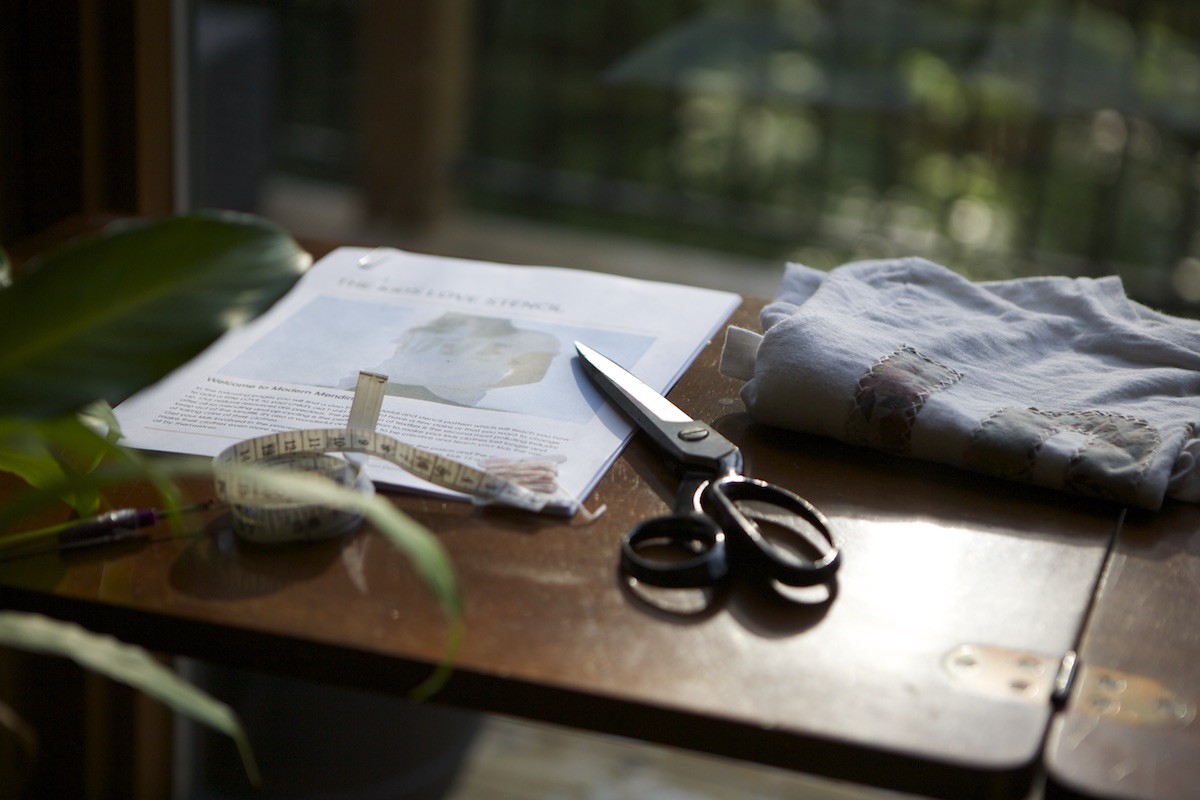Since I’m into mending lace these days, I’ve been thinking about one of my very first mending projects where I used lace appliqués to fix a sweater that had holes at the collar. Here’s a little show and tell of the piece, which 10 years later is still has a special place in my wardrobe.
The Sweater
I bought this cotton jersey bolero about 15 years ago when I was pregnant with my eldest daughter. I loved the cut and figured it would look lovely and flattering over the tunics I was wearing as my belly grew.
Two pregnancies and many washes later, the seam at the neckline began to break – a common problem with thin gauge sweaters.

The inspiration for the repair
I decided to give my well loved cardigan a romantic inspired makeover by using lace appliqués to cover the holes. Living in San Francisco at the time, I found these beautiful white cotton lace pieces at the infamous Britex fabric store. This type of lace is called Battenberg and is made with ribbon that is twisted and stitched, usually in a floral or paisley pattern. A few years ago it was very popular as an insert on jersey tops, around necklines or sleeve hems which gave the garment a modern romantic look.

Because I wanted the lace detail to be the feature, I was looking for an appliqué that would match the color of my bolero. Most lace pieces come in either white or black, and are often synthetic. Battenberg lace, being 100% cotton, was the perfect choice to match the fiber content of my top and allowed me to dye it to match the color of my sweater. Unfortunately, synthetic fabrics such as polyester or nylon are impossible to dye.
How I fixed the sweater
As you might know, most commercial dyes are synthetic and not very eco-friendly. I had heard that it was possible to dye fabric with black tea so I decided to give it a try with this lace.
It didn’t exactly match the camel color of my top but it the few shades lighter still worked well. A vast improvement from the stark contrast of the white that it originally was.
Mending Tip: If you have a white garment that has lost it’s shine, using black tea is a very easy way dye fabric light beige.
Once dyed, I placed the appliqués over the areas where the holes were and with a whipstitch, stitched around the lace and in the center of the appliqué to hold it in place.

I have quite a few memories attached to this piece, one of them being that I had the privilege to work as a designer for Jacob, where this little top was sold. If you’re from Canada, I’m certain you know this company well. It was our Zara for 30 years but sadly closed it’s doors a few years ago. I still own a few pieces from this brand as they were masters at making timeless classics.
So here we are, 10 years later and I still think this repair holds quite well. After many washes, the color of the lace has stayed a lovely cream and I know I will be holding onto this piece for years to come.

Do you have a special piece that you cherish? Share your story in the comments below.

